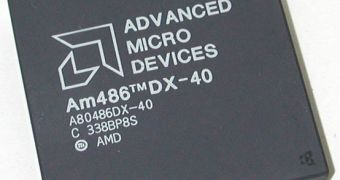Advanced Micro Devices is said to be already testing 32nm chips in Fab 36, as proof of all going according to plan with its move from the 45nm process technology to 32nm, which is scheduled for 2010. The transition to a smaller manufacturing process will be accompanied by the adoption of high K metal gate and something AMD calls ULK Air GAPS, but there are not too many details available at the moment.
AMD seems decided to become a strong competitor to Intel again. The Sunnyvale company has recently unveiled its first 45nm chip, code-named Shanghai, designed for servers, and it plans to launch a desktop processor code-named Deneb in the near future. On the other hand, Intel introduced its first 45nm CPUs about a year ago, and its objective is to move to the 32nm manufacturing technology in late 2009, while AMD will be able to make the shift only as soon as 2010, perhaps not before the second half of the year.
Even so, the chip manufacturer says it is on track, and that its position began to strengthen. Moreover, the latest news on the web announces that the company has also started working on the 22 nanometer technology, the next step after 32nm. This is a long shot move, as the technology will not be ready before 2012, while products manufactured under the process should surface in the first half of 2013.
According to the news, AMD is working on the 22nm process with IBM, which may prove to be beneficial for both companies. On the other hand, Intel is doing all the research by itself, which means that its investment in the technology will be significantly bigger. AMD's 22nm chips will be made at The Foundry Company, its manufacturing arm, which will also fabricate the 32nm chips.
AMD is facing competition on the graphics cards market as well, not only on the central processing units one. As reported, both AMD and its competitor NVIDIA have released the latest revisions for their graphics drivers, namely Catalyst 8.11 and GeForce 180.48, both meant to bring new features and leverage the performance of the companies' products.
Unlike AMD, which stressed more on the new features brought by the releases, NVIDIA worked on the performance improvements, and managed to deliver to its users a set of drivers which significantly leverage the output of its cards. The new NVIDIA drivers allow the green cards to out pace Radeon HD 4870 by far, which is not a good thing for the red team. AMD's graphics division ATI has already announced that it would release a new set of its Catalyst drivers in December, and they are expected to counter attack NVIDIA's move.

 14 DAY TRIAL //
14 DAY TRIAL //